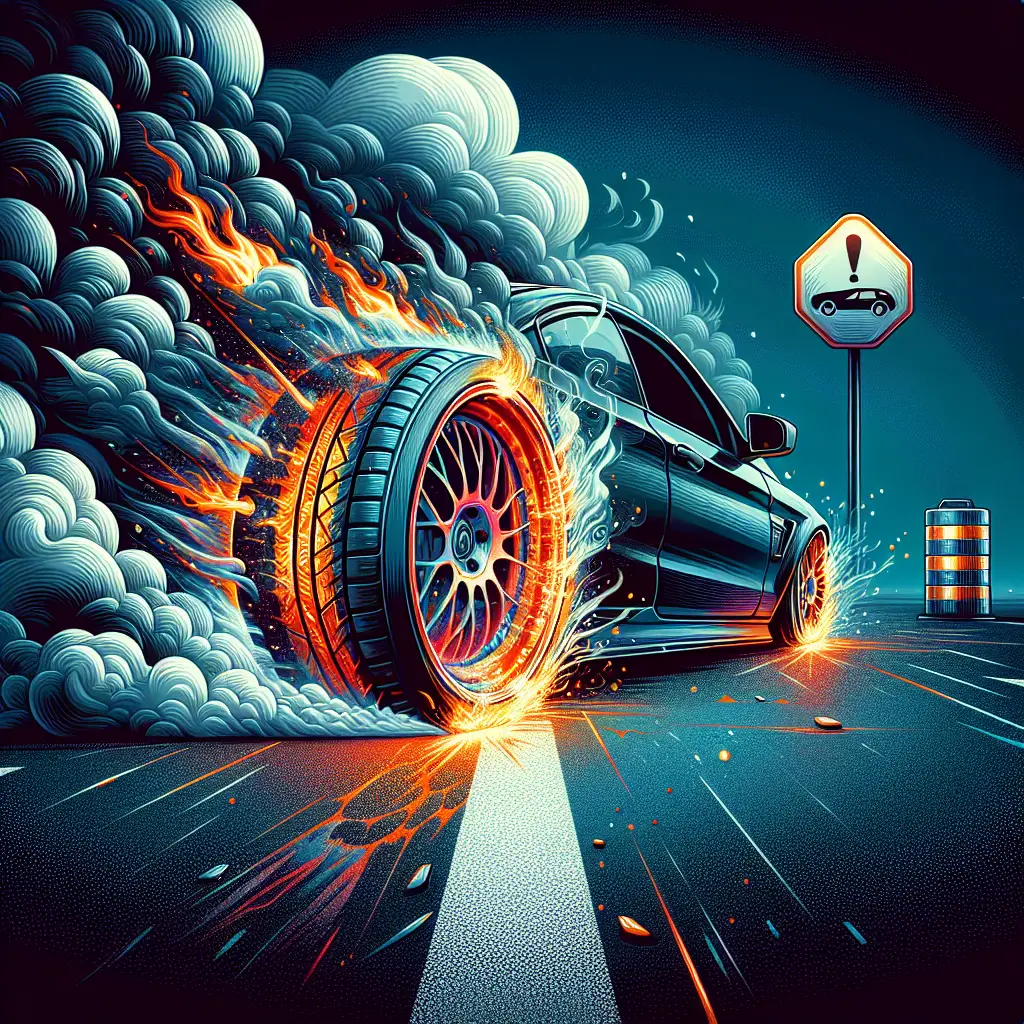Are Burnouts Bad for Your Brakes? Let’s Break it Down
Burnouts, the flashy display of automotive power where a car’s tires are spun fast enough to create smoke and noise, is a commonly seen spectacle in movies, car shows, and sometimes, on the streets. While it can look cool and exhilarating, have you ever wondered what that stresses does to your car, especially the brakes?
Understanding Burnouts: It’s Not Just About the Smoke
A burnout primarily involves the tires, but it’s not just the rubber that takes the hit. The whole process puts a significant strain on the car’s powertrain, which includes the engine, transmission, driveshaft, differential, and yes, the brakes.
For those not familiar with the term, a burnout happens when a driver keeps the car stationary (often with the front brakes applied) while power is sent to the wheels, causing them to spin and the tires to heat up and lose traction, resulting in smoke and skid marks.
The Brakes’ Role in a Burnout
Interestingly, in many cases of burnout, the front brakes are intentionally engaged to keep the car from moving forward. The brake pads clamp down on the rotors, while the back tires are set loose to spin. This action creates a massive amount of heat and friction, not just for the tires, but for the braking system too.
The Toll on Your Brakes
Here’s the kicker: yes, burnouts can be bad for your brakes. When you subject your brakes to the high temperatures generated during a burnout, you risk a range of negative outcomes. Let’s dive into some of the issues that might arise.
1. Brake Wear and Tear
The most immediate concern is the accelerated wear on your brake pads and rotors. During a burnout, the stationary vehicle’s brakes are used to hold the car in place while the wheels spin. This action causes an enormous amount of heat, which can lead to the brake pads wearing out much faster than they would under normal circumstances.
2. Warped Rotors
Heat is a by-product of friction, and in the case of a burnout, the front brakes experience a lot of it. Excessive heat can cause the brake rotors to warp, leading to a pulsating brake pedal and a significant decrease in braking effectiveness. According to Consumer Reports, warped rotors need to be checked and possibly replaced to ensure safe braking.
3. Brake Fade
Brake fade is another potential issue. When brakes overheat, they can lose their friction properties, which is known as brake fade. When this happens, you might push the brake pedal, but the car won’t slow down as expected. The National Highway Traffic Safety Administration (NHTSA) warns that brake fade can lead to brake failure and accidents if not handled promptly.
4. Damaged Brake Lines and Fluid
The intense heat doesn’t stop with the solid parts of the brakes. It can also affect the brake lines and fluid, potentially leading to brake fluid boiling and gas bubbles forming in the system. If this happens, brake efficiency drops alarmingly. Car and Driver provide a good understanding of why it’s important to maintain healthy brake fluid and lines.
The Bigger Picture: Long-Term Costs
Beyond the immediate risks to your safety, burnouts can also hit where it hurts—your wallet. Here are some long-term costs to consider:
Increased Maintenance and Repair Costs
Wear and tear on your brakes require more frequent servicing, and potentially, replacement parts. Brake pads, rotors, and even calipers may need attention sooner as a result of regular burnouts.
Tire Costs
While it’s not the focus of this article, it’s important to mention that tires will suffer significantly. Your fancy burnout may have just shaved off a considerable amount of life from your expensive rubber.
Decreased Vehicle Value
Maintaining a vehicle involves keeping it in optimum condition. Regular burnouts can significantly decrease your vehicle’s value over time due to the increased stress on various components.
Considerations Before You Decide to Burn Rubber
If you’re considering performing a burnout, whether it’s to impress an onlooker or for the sheer thrill of it, pause and ponder about the ramifications for your vehicle’s brakes and overall health.
Safety First
Remember, brakes are a critical component in vehicle safety. Compromising them for a moment of excitement is never worth the risk to yourself and others. Public roads are, by law, not the place for such stunts, and private property should only be used with explicit permission and under safe conditions.
Professional Settings
If you must do burnouts, do so in a controlled environment such as a racetrack, where help is close at hand, and safety measures are in place. Even then, be prepared for the associated costs and have a strategy for maintenance.
Summing It Up
In conclusion, burnouts may look exciting in the moment, but the hidden costs and risks they pose to your brakes and vehicle as a whole are serious. Play it safe and consider the broader implications of such high-intensity stunts on your precious ride. If you want to enjoy your vehicle’s power and capabilities, do so responsibly to ensure that you get the most out of your machine without compromising on safety and economics.
Remember, the smoke may clear, but the damage can linger way beyond that fleeting rush. Take care of your car, and it’ll take care of you on the roads.
Whether you’re a car enthusiast or simply passionate about vehicle maintenance, it’s crucial to understand the impacts of your actions on your vehicle. Responsible driving ensures safety, longevity, and the pleasure of owning a car without unnecessary downtime due to repairs. Be wise, and don’t let the heat of the moment burnout your brakes or your bank account.

